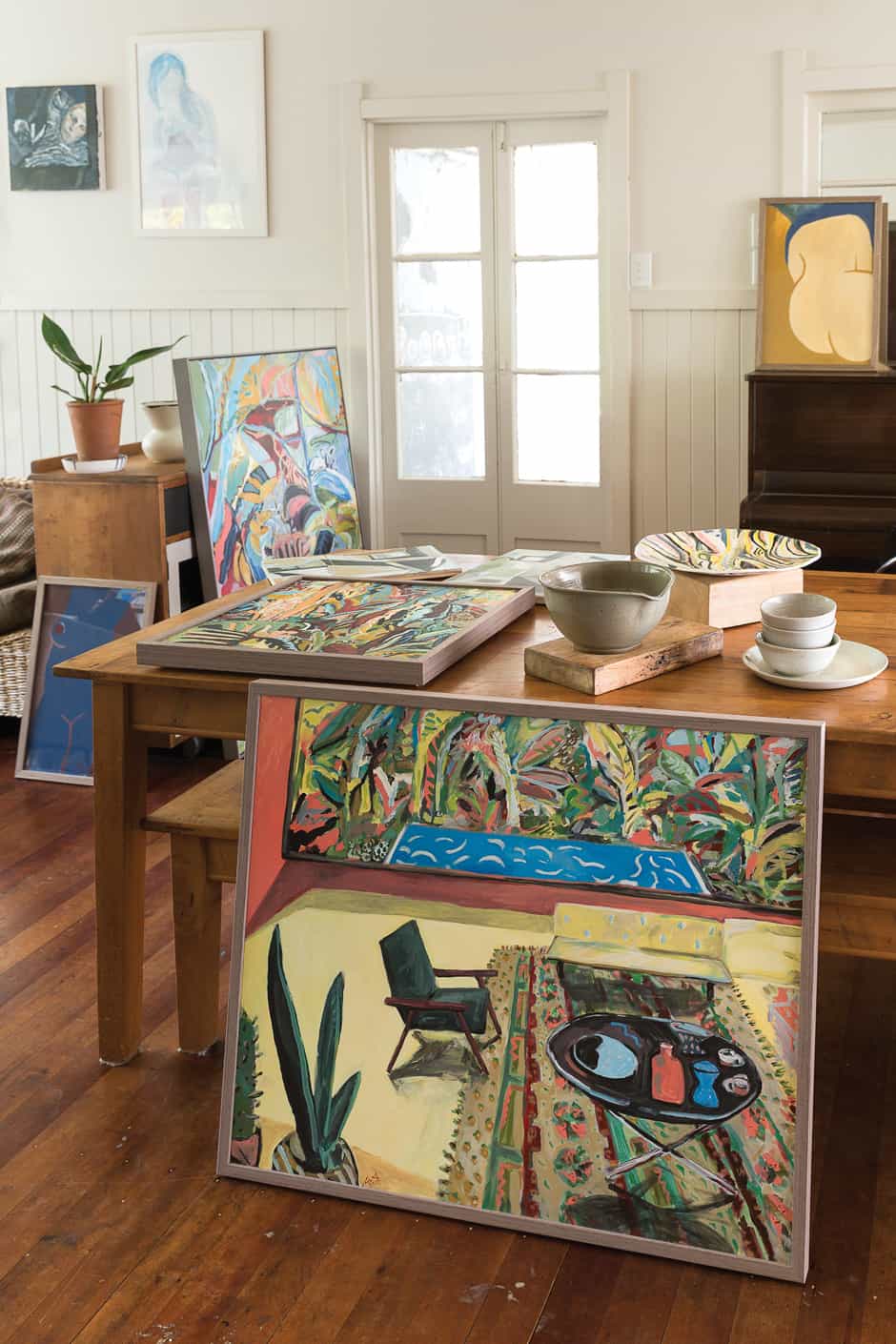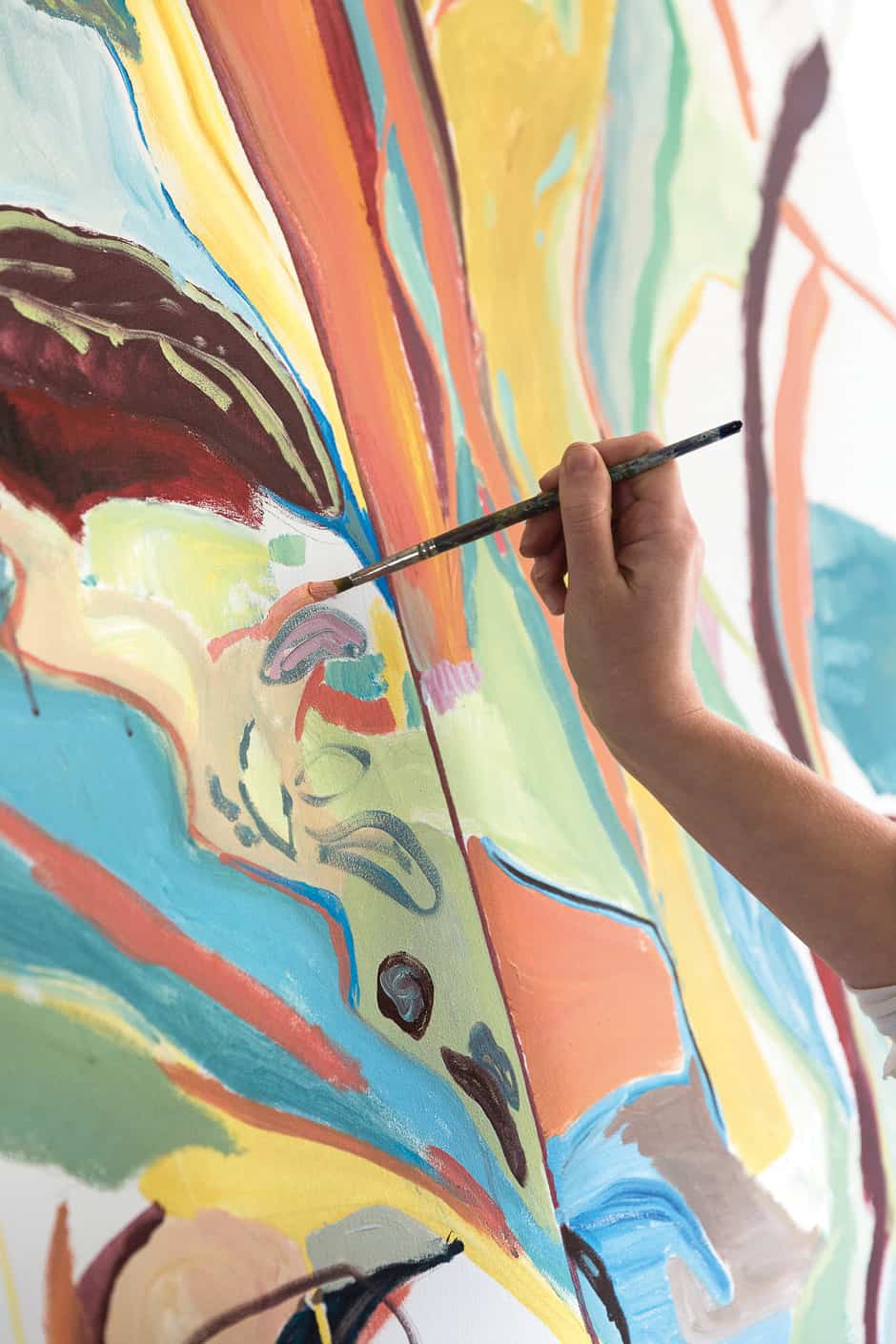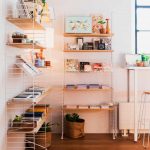With spontaneity and movement at the centre of her practice, multitalented maker Carmel Van Der Hoeven is learning as she goes.
Self-taught multi-disciplinary artist and all-round creative whirlwind Carmel Van Der Hoeven produces her restrained figure drawings, abstract expressionist paintings and ceramic works under the moniker George Sand Studio. The name is an homage to Amantine Lucile Aurore Dupin, a 19th- century French writer who flouted the conventions of her time in love and life, and published her novels as George Sand.
“It’s a broad pseudonym that not many of my generation are familiar with,” explains Carmel. “My mother suggested it when I wasn’t quite ready to use my own name on my work.”
As a novice creative, becoming George Sand gave Carmel the freedom to experiment with a variety of disciplines with a certain anonymity. Now she’s established a following, it’s stuck.

MAIN IMAGE Carmel in her pottery studio on the family’s lifestyle block in Pirongia, near Hamilton. “I love that when people come over for dinner they get to eat off my handmade pieces,” she says. “It’s always a proud moment for me.” ABOVE Painting often takes place in the house or garden. “Everything inspires me: life, food, fashion, art and people,” says Carmel of her influences. She’s an admirer of British artist David Hockney – the painting pictured in the foreground has hints of his style.
Carmel, what got you started on this creative path? I’ve always loved to draw and paint, but I didn’t get serious until four years ago. I was bored during my pregnancy with my second child, so I began to draw baby animals – my version of ‘nesting’. I got in touch with Elliot Alexander at Auckland’s Endemic World to enquire about art paper and he asked to stock my illustrations. That was a real ‘wow’ moment for me: a door had suddenly opened.
A few years ago, I saw Holly Houston’s ceramics on Instagram and fell in love with the idea of pottery. I knew nothing of the discipline, so I asked a family friend for a clay session with her and was fortunate enough to be loaned her potter’s wheel. I liked throwing immediately, so I enrolled in night classes with the Waikato Society of Potters and it just took off. I bought an ancient manual kiln, made a ton of mistakes – you always do with ceramics, it’s a very complicated art form – and slowly navigated my way through it.
What’s your studio like? My pottery studio has moved three times since we’ve lived here. First, it was in our outside laundry so I could practice throwing while my kids were asleep, then it was in the garage of our cottage, and now it’s in our large work shed.
I’ve been painting and drawing in the lounge or outside so I can look after the kids while I work. I’d love an industrial space where I could switch between both art forms, but for now it works well.
Do you have a daily routine? Pottery has a funny schedule – I just sort of work around it. One day it might be glazing, other days it’s loading a kiln or sanding bums. The first thing I always do is put on music; for both art and pottery, music is a huge part of my making process.
Is there a relationship between these creative disciplines? If I’m making art ceramics, my painting and drawing are definitely connected to that, and vice versa. You may see some of my ceramics pop up in my still-life paintings, but the nature of glaze and clay is so different from painting that they’ll never be exactly the same.
The only time I treat them separately is when I make tableware ceramics. I’m sure some of my art influences my decisions about colour and form, but essentially the design is to enhance food, not distract from it, so I tend to be quite minimal in my approach.

What materials do you use for your ceramics? I use porcelain and stoneware clays and fire in oxidation and reduction kiln atmospheres. Most of the time I throw on the wheel, turn, bisque fire and then glaze fire. I use a huge range of glazing techniques: dipping, spraying, glaze trailing and brushwork.
And what about for drawing and painting? Right now, I primarily paint with acrylics and watercolours. The process can be different depending on what ‘ism’ I’m painting in. For more abstract pieces, I’ll start with an idea or a feeling and maybe a couple of colours I think sing together – and then it happens organically. There’s usually some movement I want to capture; even my still-life paintings are never stagnant – they allow the eye to roam.
Illustration is different, as the finished works are mostly designed to enhance a space and not necessarily challenge the viewer. I draw everything freehand and then rework pieces in Photoshop.
Have you developed a signature style? I don’t think so – and I’m quite happy with that. Being almost entirely self- taught, I’d be worried if I stopped with just one style. At the moment my work is identifiably my own, but I would like to continue to push myself and continue to evolve.
georgesandstudio.com
Words Lisa Morton
Photography Michelle Weir







